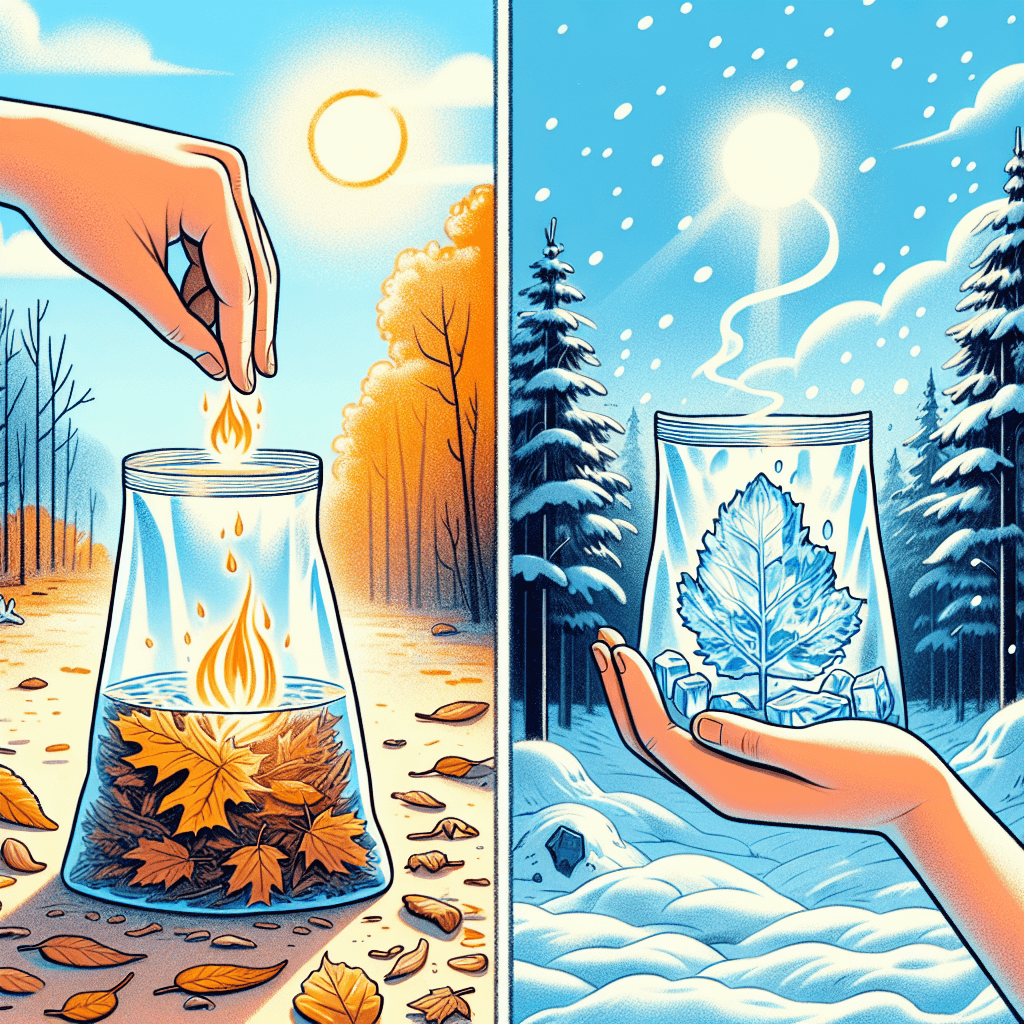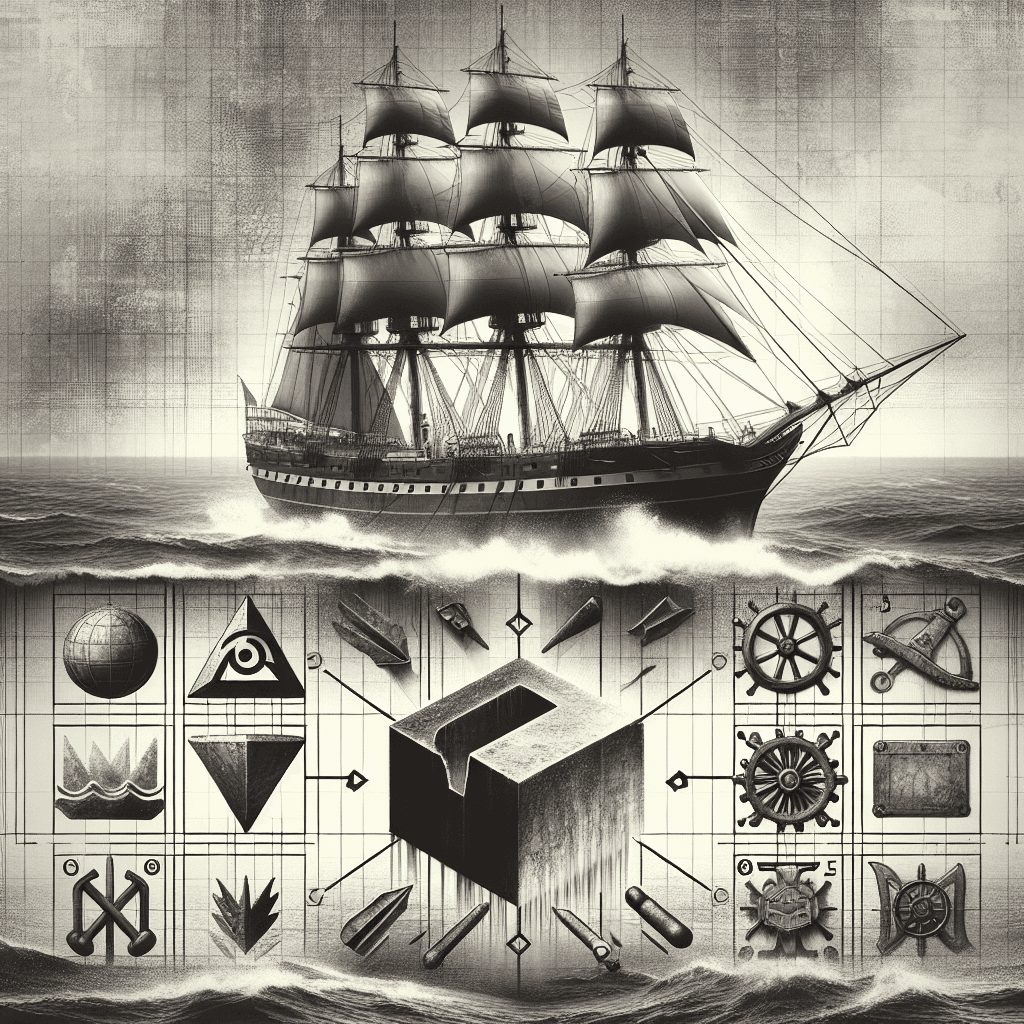Why can you start a fire using a clear bag of water or a piece of ice
It defies intuition, but the very elements that extinguish a flame can be harnessed to create one—discover the simple physics that turns ice and water into a powerful, fire-starting tool.


Too Long; Didn't Read
A clear bag of water or a piece of ice can be shaped to act like a magnifying glass. This lens focuses sunlight into a single, intensely hot point that is strong enough to ignite dry tinder.
Harnessing the Sun: The Science Behind Why You Can Start a Fire Using a Clear Bag of Water or a Piece of Ice
Imagine being lost in the wilderness on a bright, sunny day. You have fuel and the desperate need for a fire, but no matches or lighter. You look at your water bottle and a clear plastic bag in your pack. Could these items, seemingly the antithesis of fire, be your key to survival? The answer, surprisingly, is yes. The idea of starting a fire with water or ice sounds like a magic trick, but it's a pure and fascinating application of fundamental physics. This post will delve into the science that explains why you can start a fire using a clear bag of water or a piece of ice, transforming common items into powerful, life-saving tools.
The Physics of Fire: A Quick Refresher
Before we harness the power of water, it's essential to remember what a fire needs to exist. The concept is often simplified as the "fire triangle," which consists of three critical components:
- Fuel: A combustible material, like dry leaves, bark, or tinder.
- Oxygen: Abundantly available in the air around us.
- Heat: The initial energy required to raise the fuel to its ignition temperature.
When you use a bag of water or a piece of ice to start a fire, you are creating a tool to solve for one variable in this equation: heat. You are not magically creating fire from water, but rather using water as a medium to generate intense, focused heat.
The Power of a Convex Lens
The entire principle behind this survival technique lies in the shape and properties of a lens. Specifically, a convex lens—one that is thicker in the middle and curves outward on both sides, like a classic magnifying glass.
When parallel rays of light from a distant source like the sun pass through a convex lens, they are bent, or refracted, inward. The lens geometry causes all these individual light rays to converge at a single, precise spot on the other side. This spot is known as the focal point. By concentrating the light energy from a wide area into a tiny dot, a convex lens can generate an incredible amount of heat at its focal point, easily reaching temperatures high enough to ignite tinder.
From Water and Ice to a Working Lens
The genius of this method is realizing that you don't need a perfectly ground piece of glass to create a convex lens. You can improvise one using transparent, malleable materials.
The Water-Bag Lens
A clear plastic bag filled with water can be shaped to mimic a convex lens. By holding the bag and squeezing it, you can create a spherical or curved shape. The smooth, curved surface of the water inside the bag acts as the lens. For this to work effectively:
- Clarity is Key: The bag and the water must be as clear as possible to allow maximum sunlight to pass through without being scattered or absorbed.
- Shape Matters: The goal is to create a rounded, lens-like shape that can effectively focus the sunlight. The more spherical, the better the focal point will be.
The Ice Lens
Similarly, a piece of clear ice can be fashioned into a powerful lens. This method was reputedly used by indigenous peoples in arctic climates. The process involves finding a piece of ice that is as free of bubbles and impurities as possible. Then, it must be shaped. This can be done by carefully carving it with a knife or by using the warmth of your hands to melt and smooth the surfaces into a convex, lens-like shape. While it requires patience and a steady hand, a well-formed ice lens can be just as effective as a magnifying glass.
Putting Theory into Practice: A Basic Guide
If you ever need to try this, the process is straightforward but requires precision and patience.
- Gather Your Materials: You need your makeshift lens (a water-filled bag or a shaped piece of ice), bright and direct sunlight, and a small pile of very dry, fluffy tinder (char cloth, cotton ball lint, or finely shredded wood shavings work best).
- Focus the Light: Hold your lens between the sun and your tinder.
- Find the Focal Point: Carefully adjust the distance of the lens from the tinder until you see the smallest and brightest possible point of light on its surface.
- Be Patient: Hold the lens perfectly still. The concentrated energy will begin to heat the tinder. It will start to char, then smoke, and eventually, a tiny, glowing ember will form.
- Nurture the Flame: Once you have a smoldering ember, gently transfer it to a larger tinder bundle and blow on it softly to encourage it to burst into flame.
Conclusion
The ability to start a fire with water or ice is a perfect illustration of scientific principles at work in the real world. It’s not magic; it’s a clever application of light refraction through a makeshift convex lens. By understanding how to shape these common materials to concentrate the sun's energy, one can create the critical heat needed to complete the fire triangle. While hopefully a skill you’ll never need for survival, it serves as a powerful reminder of human ingenuity and the hidden potential that lies within everyday objects. It encourages us to look at the world not just for what it is, but for what it can become with a little bit of knowledge.
More Articles

Why is it safe to eat the mold in blue cheese but not on bread?
One mold is a carefully cultivated delicacy, while its cousin on your bread is growing dangerous, invisible toxins—we'll break down the crucial difference.

Why does fresh pineapple prevent gelatin desserts from becoming solid?
It's not a kitchen mistake; it's a case of culinary sabotage at the molecular level. Discover the powerful, protein-devouring enzyme in fresh pineapple that's actively digesting your dessert before it can even set.

Why are some ships deliberately fitted with metal blocks that are designed to be destroyed?
It sounds like madness, but these humble metal blocks are designed with a single, vital mission: to sacrifice themselves to the sea, preventing the ship's massive hull from being eaten alive.